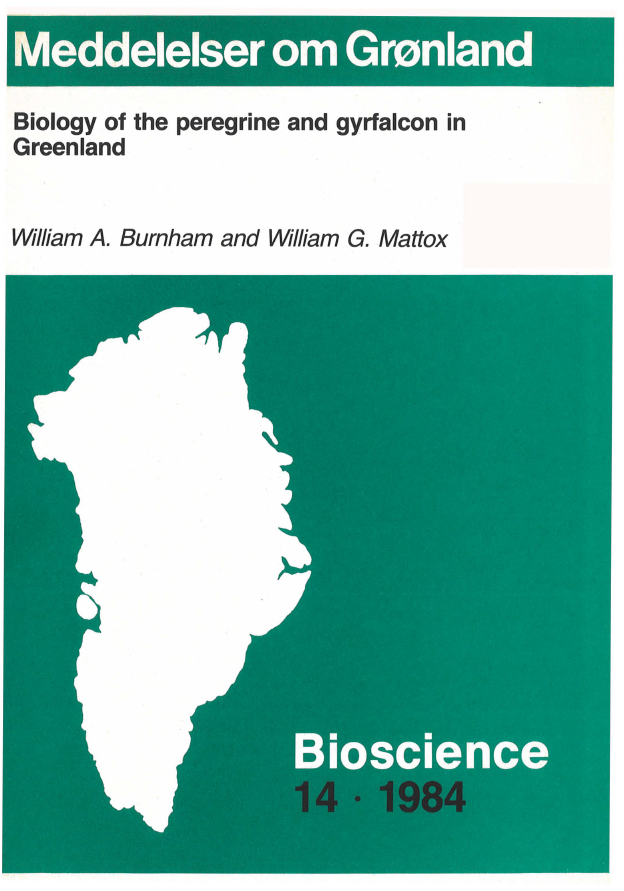Biology of the peregrine and gyrfalcon in Greenland
DOI:
https://doi.org/10.7146/mogbiosci.v14.142332Abstract
A ten year study began in 1972 in West Greenland to investigate the breeding biology of the peregrine falcon. Data on nesting gyrfalcons were also collected. Thirty-four peregrine nesting sites were examined in the 6050 km2 inland study area near Søndre Strømfjord. Limited research also centered in Disko Bugt and Frederikshåb. Peregrines were found nesting predominantly on high, south-facing cliffs which overlooked large areas. The mean minimum distance between peregrine eyries was 7.7 km for the inland area (1972 and 1973) and 55 km for the coast (1974). Approximately 60 percent of the inland nesting sites were occupied each year. A ten-year average production of 1.90 young per occupied site and 2.78 young per successful site was determined. Lapland longspurs, snow buntings, wheatears, and redpolls comprised 90 percent of the peregrine's diet. Raven nests and prey availability may affect gyrfalcon nesting. Gyrfalcons and peregrines did not breed successfully on the same cliffs as they do in Alaska where prey species number and density is greater.
Competition for nest sites probably occurs, but prey availability may be the most significant factor affecting falcon density. Addled peregrine eggs, eggshell fragments, and peregrine prey species were collected. Whole eggs averaged 14.3 ppm wet weight (305 ppm lipid weight) DDE, while eggshell measurements showed a 16 percent thinning compared with pre-1940 eggs from Greenland. Prey species carried low levels of DDE. The peregrine population appears to be at a near critical contamination level, and a small increase in DDE level could contribute to a population decline. No indication of a decline has been observed during the study, and the population appears stable. The project banded 185 peregrines, from which 8 recoveries occurred. The recoveries suggest peregrines migrate south to winter in South America.

Downloads
Published
Issue
Section
License
Coypyright by the authors and the Commision for Scientific Research in Greenland / Danish Polar Center/Museum Tusculanum Press as indicated in the individual volumes. No parts of the publications may be reproduced in any form without the written permission by the copyright owners.

